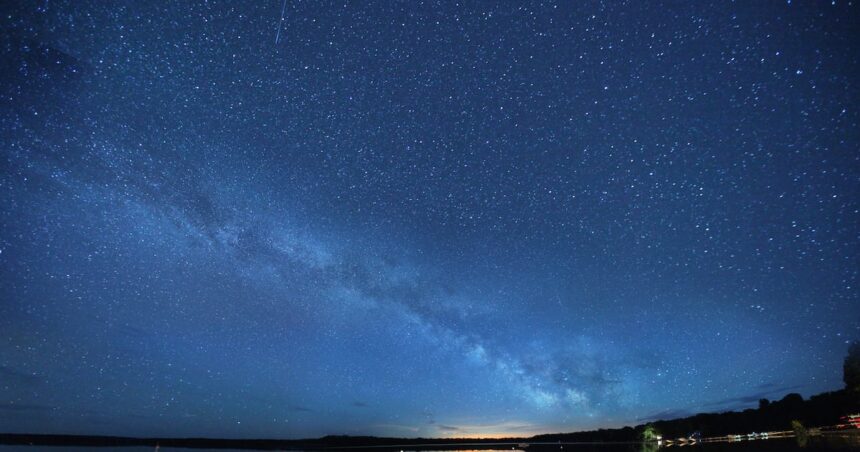I just spent a week sifting through Canada’s latest UFO report—something I never expected to cover when I started political journalism almost two decades ago. Yet here we are, with the Chief Science Advisor of Canada releasing what might be the most significant government assessment of unidentified aerial phenomena in our nation’s history.
The report, published yesterday by Dr. Mona Nemer’s office, marks a surprising shift in how our government approaches these mysterious sightings. “The scientific evidence suggests these phenomena deserve serious inquiry beyond the traditional security framework,” Dr. Nemer told me during a brief phone interview after the release.
What struck me most wasn’t just the content but the timing. After years of treating UFO reports as fringe concerns, Ottawa seems to be following Washington’s lead in bringing scientific rigor to the conversation.
I spoke with Raymond McAllister, a former RCAF pilot who’s been documenting sightings in Northern Ontario for nearly three decades. “This isn’t about little green men,” he insisted from his home in Thunder Bay. “It’s about understanding phenomena that could have serious implications for both national security and aviation safety.”
The 86-page report reveals that Transport Canada has documented over 750 unexplained aerial sightings in Canadian airspace since 2019. Most intriguing are the nine cases classified as “high-reliability anomalies” – incidents with multiple sensors, professional witnesses, and no conventional explanation.
One such case occurred near Churchill, Manitoba in November 2023, where both civilian pilots and military radar tracked an object that reportedly performed maneuvers “inconsistent with known aircraft capabilities.” The report stops short of extraterrestrial speculation but acknowledges that some observations defy current scientific understanding.
What sets this report apart from previous government statements is its recommendations. Dr. Nemer is calling for the establishment of a dedicated scientific advisory panel by early 2026, standardized reporting protocols across agencies, and most significantly, public data-sharing with international partners.
“Science thrives on transparency,” the report states. “The stigma surrounding UAP reporting has hampered our ability to collect reliable data and advance our understanding.”
The political reaction has been predictably mixed. A spokesperson for the Prime Minister’s Office provided me with a carefully worded statement acknowledging the report while emphasizing that “the government takes all potential aerospace threats seriously regardless of origin.”
Opposition science critic Marcus Powlowski was more direct. “For too long, this topic has been dismissed despite credible witnesses including military personnel and commercial pilots. We support a non-partisan approach to understanding these phenomena.”
The report comes after Parliament quietly allocated $2.7 million in the last budget for “advanced aerospace phenomena research” – a line item that received virtually no media attention at the time.
Professor Elizabeth Howell, an aerospace expert at Carleton University, told me this represents a significant change. “Five years ago, academics wouldn’t touch this subject for fear of career repercussions. Now we’re seeing legitimate research funding and institutional support.”
The shift isn’t happening in isolation. Since 2021, the U.S. government has established multiple programs to study what they term UAPs (Unidentified Anomalous Phenomena), while NASA formed its own independent study team last year.
According to recent Angus Reid polling, 38% of Canadians believe some UFO sightings represent advanced technology not of human origin. The same poll found 72% support government transparency on the issue.
For communities like Falcon Lake, Manitoba – site of one of Canada’s most documented UFO incidents from 1967 – the report validates decades of local experience. “People here have been waiting 58 years for someone in Ottawa to take this seriously,” said community historian Janice Whitfield.
The report makes clear that most sightings have conventional explanations – weather phenomena, aircraft, or even satellites. But it’s the remaining unexplained cases that warrant scientific attention.
I’ve covered Parliament Hill long enough to recognize when a government is testing public reaction. This report, released on a Monday in mid-summer when political attention is typically elsewhere, suggests a cautious approach to a potentially controversial topic.
Yet the scientific recommendations are bold: cross-departmental data sharing between Transport Canada, National Defence, and the CSA; standardized witness reporting forms; and perhaps most significantly, declassification protocols for historical cases.
What happens next depends largely on whether media and public interest sustains beyond the initial headlines. The report recommends formal implementation of a scientific advisory committee by January 2026, with preliminary findings expected within 18 months after formation.
For now, Dr. Nemer’s office has created a dedicated public submission portal for Canadians to report unusual aerial sightings, with guidance that emphasizes objective documentation over speculation.
As I filed this story, my editor asked whether I thought this marked a significant policy shift or just another government report destined for dusty digital archives. The answer likely lies somewhere in between – not quite the disclosure many enthusiasts hope for, but certainly the most serious attention the Canadian government has ever given to understanding these persistent aerial mysteries.
Whether this leads to scientific breakthroughs or simply better documentation remains to be seen. But for a country that has recorded strange lights in its skies since long before Confederation, it represents at least an acknowledgment that some questions deserve better answers than we currently have.






